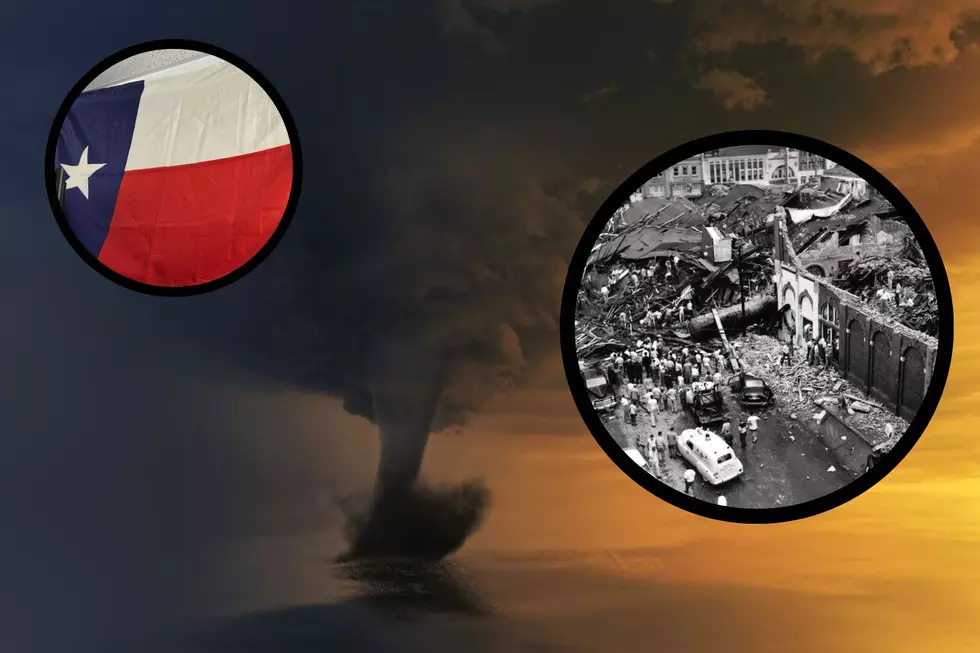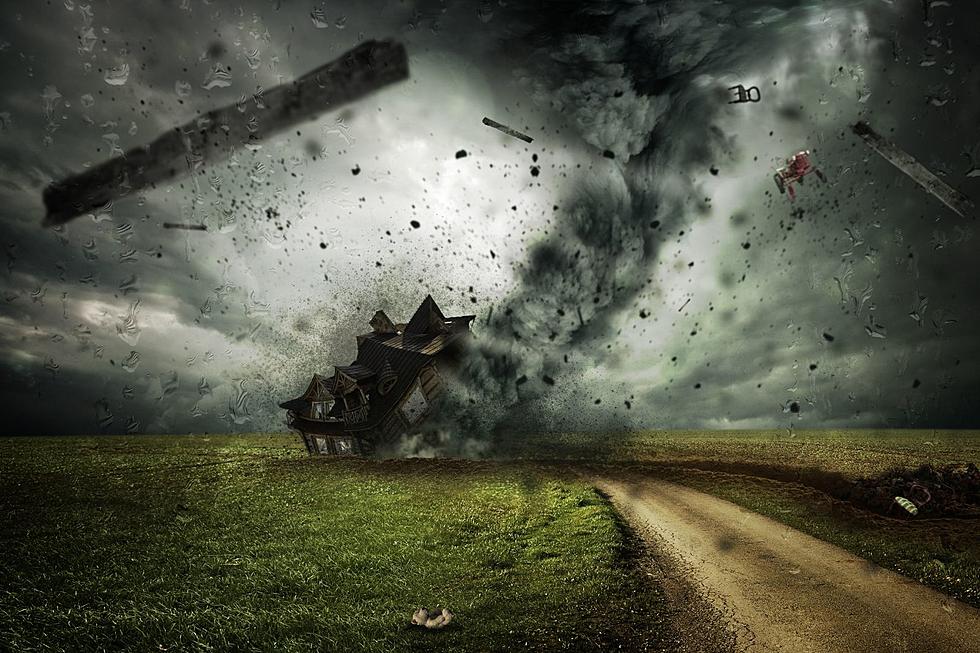
How Many F5 Tornadoes Have Brought Havoc to Texas
Texas is without a doubt one of the states you're likely to see a tornado. However no one wants to see the strongest tornadoes out there; the dreaded F5 (EF5). These are the most powerful tornadoes according to the Fujita Scale; they can have winds ranging anywhere over 200 mph. Texas HAS seen a handful of them before since the 1950s.
The 1953 Waco F5 Tornado
We start off with what scientists consider is the first "official" F5 tornado in the United States; the F5 tornado the struck Waco, Texas on May 11, 1953. Over 100 people lost their lives in one of the worst tornadoes to ever hit Texas.
It would be another decade before Texas would see its next F5 tornado...
The 1964 Wichita Falls F5 Tornado
The Northwest side of Wichita Falls & Sheppard air Force Base would see an F5 tornado strike the city at around 2:35pm on April 3, 1964. The death toll wasn't as high as it was in 1953 but 7 people were still killed & 225 homes were destroyed.
The most active decade for F5 tornadoes in Texas was the 70s; there were at least 3 recorded.
The 1970 Lubbock F5 Tornado
Just 5 months into the new decade, Lubbock, Texas would see the next F5 tornado on May 11, 1970. There was an earlier tornado but the one that caused the most damage would touch down around 9:30pm (which honestly makes it even more terrifying). It lasted for 30 minutes & traveled 15 square miles of Lubbock. 26 lives were lost & 1500 people were injured.
The 1973 Valley Mills F5 Tornado
Less than 3 years later would be the next F5 tornado; this time working its way through Valley Mills, Texas on May 6, 1973. The tornado traveled just 10 miles through McLennan & Bosque Counties. Thankfully, no one was killed or even injured from this tornado. The only causalities were 2 barns in its path & a pick up truck.
The 1976 Brownwood F5 Tornado
The next F5 tornado to hit Texas would be on April 19, 1976 in Brownwood, Texas. The tornado touched down near Highway 67 & although no one was killed, 11 people would be injured. Several buildings, a motorcycle racetrack and a parked car were among the things destroyed by the twister.
20 years would pass before the next, and so far final, F5 tornado. Unfortunately, it's one of the most well known tornados in history.
The 1997 Jarrell F5 Tornado
Last but certainly not least is the F5 tornado that hit Jarrell, Texas on May 27, 1997.
This is certainly the one that people remember the most; a small tornado would form from a thunderstorm between 12-12:30pm but on 2:30pm, more twisters would form and become monsters.
Because so many people had cameras at this time, we can actually see the tornado grow and develop...and destroy. This is also where the infamous "Dead Man Walking" photo comes from. In total, 20 tornadoes wreaked havoc through Central Texas.
In the end, 27 people were killed in the disaster, all residents of the Double Creek Estates. Today people still visit the memorial site to pay their respects to the lives lost & forever changed that fateful May day.
In total 6 tornadoes have hit Texas; 7 if you want to count what happened to the one Texas city that was destroyed by a 1947 tornado that first started in Oklahoma and made its way into Texas.
So far the 1997 Jarrell F5 tornado remains as the last F5 tornado to hit Texas...let's hope it stays that way for a long time.
If you want to see which Texas city is likely to get hit by a tornado, you can see the full rankings here.

6 Famous Animal Buried in the Lone Star State
Gallery Credit: Maleri McHam
The Weirdest & Craziest Things Found in Texas on Google Maps
Gallery Credit: Daniel Paulus
10 Illegal Plants You Better Not Get Caught Growing in Texas
Gallery Credit: Daniel Paulus
More From KLAQ El Paso









